BOEM Completes Environmental Review Ahead of Gulf of Maine Wind Leases
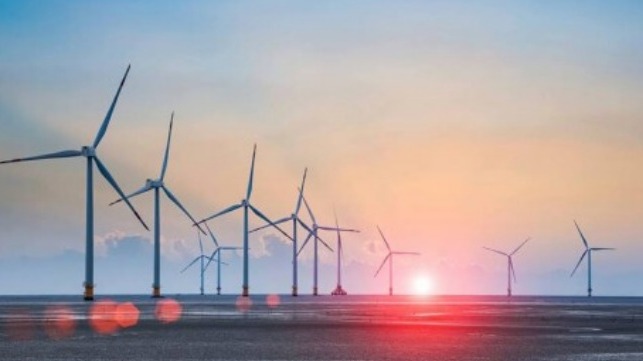
The Gulf of Maine is moving closer to becoming another prime area for offshore wind after the U.S. Bureau of Ocean Energy Management (BOEM) completed its environmental review of the region. The review is the next step toward greenlighting commercial leases after BOEM announced the start in March and followed up in April with the designation of the first areas for leases.
BOEM announced that a comprehensive assessment of the wind energy area in the Gulf of Maine has shown that deployment of offshore wind projects will not have adverse impacts on the environment. In its final Environmental Assessment, the agency declares that possible wind energy-related leasing, site assessment, and site characterization activities in the earmarked areas will not significantly impact the human environment.
The detailed EA evaluated the potential issuance of commercial wind energy leases off the coasts of Maine, New Hampshire, and Massachusetts. It focused mainly on commercial wind activities such as conducting surveys and installing meteorological buoys. However, the assessment does not tackle the installation of offshore turbines, which would be assessed in a separate environmental review if a leaseholder submits a project proposal.
BOEM has already identified the potential from the Gulf of Maine to produce 15 GW of renewable energy that would be enough to supply power to more than five million homes. Eight potential lease areas totaling nearly one million acres have been identified in the Gulf of Maine.
“We are committed to ensuring that future offshore wind development proceeds in a manner that reduces potential impacts on other ocean activities and the surrounding ecosystem,” said Elizabeth Klein, BOEM Director.
Getting the Gulf of Maine closer to commercial auctions is another milestone in the Biden-Harris administration’s ambitions of deploying 30 GW of offshore wind energy capacity by 2030 and 15 GW of floating offshore wind energy capacity by 2035.
The administration last week highlighted it had reached the halfway mark on its goal having so far approved 10 commercial-scale offshore wind energy projects with a combined capacity of more than 15 GW, enough to power 5.2 million homes. Officials estimate that the successful deployment of 30 GW of offshore wind will help power 10 million homes with clean energy, support 77,000 jobs, and avoid 78 million metric tons of CO2 emissions, while also spurring $12 billion per year in private investment in offshore wind projects.
Efforts are already underway to launch a pilot test project for floating wind turbines in the Gulf of Maine. In July, BOEM concluded a 60-day comment period for the proposed lease sale of the eight future areas in the Gulf of Maine. As part of its future schedule, BOEM anticipates conducting the first lease sales in the Gulf of Maine in 2024 and 2025.
UK Launches New Financing to Spur Offshore Wind Component Manufacturing
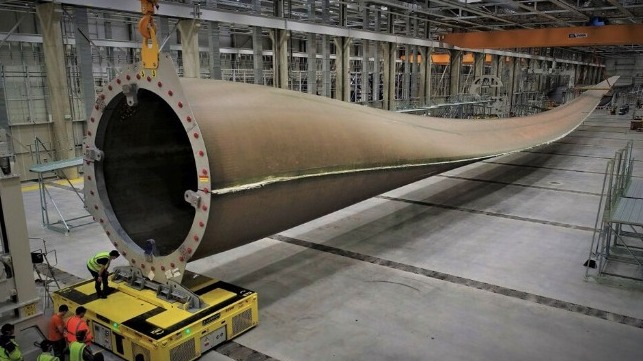
UK’s Offshore Wind Growth Partnership (OWGP) has launched a new Manufacturing Facility Support Programme (MFSP), as the country targets to boost domestic wind manufacturing capacity. The UK has identified offshore wind manufacturing and innovation as a key factor in national development. In this regard, the UK wants to capture a bigger share of the global offshore wind supply chain.
The new MSFP will have available $2.6 million in funding for UK businesses looking to either build new manufacturing facilities or expand existing ones. This includes facilities that make key components, equipment, and systems required for the offshore wind sector. The stage one application window is open until September 20.
The effort comes as the UK is driving ahead with its efforts to accelerate wind energy generation. As a country, it just passed the 30 GW installed capacity mark with half onshore and the other half offshore. The UK has the largest installed base in Europe but ceded overall leadership to China. Last week, the UK government however awarded a massive new tranche of renewable energy projects including 5.3 GW of new offshore wind and 990 MW of new onshore wind for a total of 131 contracts awarded will add 9.6 GW of renewable energy.
The MSFP aims to catalyze early-stage investment in offshore wind manufacturing. In addition, matched funding of up to $650,000 will be provided via a two-stage application process, which will help to accelerate and de-risk the early-stage (pre-investment) development activities.
The funding is primarily available for facilities that focus on areas in which the UK wants to develop its global technology leadership. These include advanced turbine technology, industrialized foundations and sub-structures, future electrical systems and cables, and next-generation installation and operations and maintenance (O&M). These priority focus areas were identified in a recent Offshore Wind Industrial Growth Plan, commissioned by the Offshore Wind Industry Council (OWIC), RenewableUK, and the Crown Estate. The plan recognizes that the UK outpaces other nations in high-value sectors such as aerospace, pharmaceuticals, automotive, and defense, and thus, offshore wind should be added to this list.
“This new program will provide highly-focused support to innovative UK-based manufacturing companies, geared towards providing locally-produced equipment and systems. Developing these resources is key to helping accelerate the deployment of offshore wind in the UK, helping us reach our ambitious target of 60GW by 2030,” said Iain Sinclair, Non-Executive Director for OWGP.
MFSP will be awarded on a competitive basis in the form of a grant. Successful proposals will demonstrate a long-term business plan that covers investment plans, forecast market share, revenue, profitability, employment, and exports.
US Approves 10th Offshore Wind Farm Reaching Halfway Toward 30 GW Goal
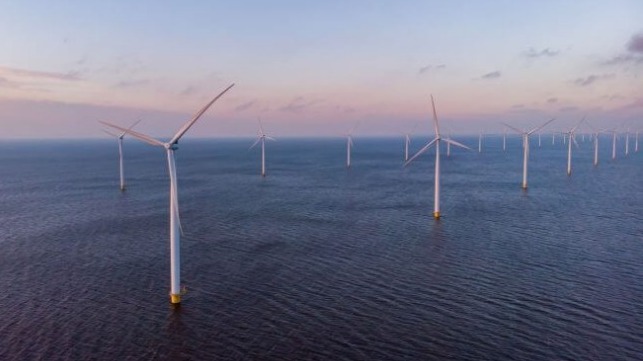
The United States reached a key mile in its efforts to develop the offshore renewable energy industry. The Department of the Interior announced today the approval for US Wind’s Maryland wind projects which mark the 10th commercial-scale offshore wind farms in the U.S. to gain approval while also surpassing the halfway mark in the Biden Administration’s goal of 30 GW of offshore wind capacity by 2030.
“Today’s milestone marks another giant leap toward our ambitious goal of unleashing 30 GW of offshore energy by 2030,” said Acting Deputy Secretary Kaura Daniel-Davis. Administration officials noted satisfaction while saying they never thought it would be easy. They recognize the industry faces challenges but is also making key headway.
US Wind, a subsidiary of Italy’s Renexia, received its Record of Decision which is the formal approval of its Construction and Operations Plan for the zone which they collectively call the Maryland Offshore Wind Project. The full site, which consists of approximately 80,000 acres off Ocean City, Maryland, has the potential to generate up to 2 GW of offshore wind power. The lease area starts at approximately 8.7 miles offshore Maryland and approximately 9 nautical miles from Sussex County, Delaware, at its closest points to shore.
The plan calls for three phases, the first of which will be MarWin. It is proposed as a 300 MW project with 22 turbines located approximately 20 miles offshore. The second phase is Momentum Wind which will consist of 55 turbines and generate an additional 808 MW. It will be approximately 15 miles offshore. Maryland has already issued permits for these first two phases of the project.
President Joe Biden issued a statement hailing the progress noting that when he came to office in 2021, “the industry was struggling to gain a foothold.” Through a partnership of the federal government and the private sector and investments, he notes the key progress. He pointed to the investments ranging from manufacturing and shipbuilding to ports and construction driven by the offshore wind industry.
US Wind, for example, highlights investments of more than $75 million in Maryland ports. It will also invest in a component manufacturing factor for monopiles called Sparrows Point Steel. Other participants in the industry have already driven shipbuilding for crew transfer vessels, the first US-built construction SOV now operating at the Revolution Wind project, and the first US-built wind turbine installation vessel under construction in Texas.
The Bureau of Ocean Energy Management announced the final Environmental Impact State for the proposed Maryland Wind project on July 29. US Wind CEO Jeff Grybowski highlighted the key steps bringing the two-year review process to a close. He said US Wind is on path to securing all remaining federal permits by the end of 2024.
New England Selects 2.9 GW of Offshore Wind for Massachusetts/Rhode Island
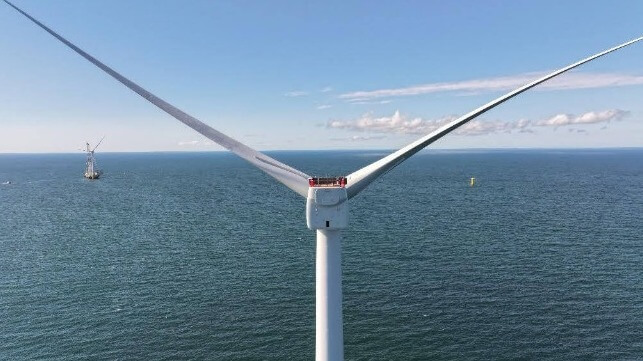
After what they are calling a rigorous selection process, Massachusetts and Rhode Island announced the results of the first multistate wind power solicitation selecting a total of nearly 2.9 GW offshore wind power. The states are reporting it as a key step in New England and Massachusetts’s offshore wind development while Connecticut which was also part of the process is yet to announce its plans.
“Simply put, we are going big,” said Governor Maura Healey of Massachusetts. “This selection is New England’s and Massachusetts’ largest offshore wind selection to date.”
Massachusetts takes the majority of the capacity, 2,678 MW while it will share a portion of one project with neighboring Rhode Island. Massachusetts already has offshore wind energy underway including Vineyard Wind 1 which is currently under construction approximately 15 miles south of Martha’s Vineyard. The Commonwealth is targeting 5.6 GW of offshore wind by 2027.
"Today marks a historic milestone for Rhode Island and Massachusetts as we join forces to drive the largest offshore wind procurement in New England's history. With this project, Rhode Island is taking a significant step forward," said Rhode Island Governor Dan McKee.
However, the latest solicitation round appears to have fallen short of its targets. Rhode Island, for example, indicated it was seeking up to 1.2 GW.
The coordination of the solicitations by the three states was designed to provide developers the opportunity to split their projects in an approach to lower risk and attract more attention. However, in the end, the processes selected just three projects, one of which will share a small portion with Rhode Island. The three projects selected come from Avangrid for New England Wind 1 as well as a partner with Copenhagen Infrastructure Partners for Vineyard Wind. Avangrid is becoming a wholly owned division of Spain’s Iberdrola. The other project selected, SouthCoast Wind, comes from a partnership of EDP and Engine called Ocean Winds.
Massachusetts and Rhode Island will share SouthCoast Wind which will have a total capacity of 1,287 MW with 1,087 MW for Massachusetts and the remaining 200 MW for Rhode Island. The project is in the zone south of Martha’s Vineyard and will be approximately 60 miles from Rhode Island with landfall connections planned for both Fall River, Rhode Island, and Somerset, Massachusetts. They target beginning construction in 2025 and expect to deliver power by 2030.
New England Wind 1 would be about 30 miles south of Barnstable, Massachusetts, and border Vineyard Wind 1. It will have a capacity of 791 MW and also targets beginning construction in 2025. Full commercial operations should be reached by 2029.
The third selected project is Vineyard Wind 2. Massachusetts reports it will take up to 800 MW of the 1,200 MW project, implying it will be shared with another state.
The companies are each emphasizing the investments to be made in the port structure to support these projects, which will work from New Bedford and Salem, in Massachusetts, New London in Connecticut, and Providence Port, Rhode Island. New England Wind 1 will invest $130 million for the marshaling port in Salem and will have an operations and maintenance hub in New Bedford. Vineyard Wind 2 will also stage in Salem and have its O&M in New Bedford. Avangrid also highlights a new manufacturing facility in New Bedford while SouthCoast will marshal turbines at the New Bedford Marine Commerce Terminal and have its operations at the Foss Terminal in New Bedford.
Each of the projects will begin contract negotiations with the states. The goal is to complete the contracts this winter.
Supply Chain Problems Threaten Another New Jersey Offshore Wind Farm Plan
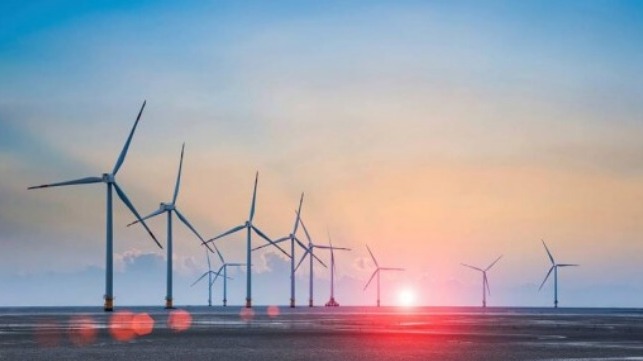
Supply chain problems have repeatedly been cited by wind farm developers as one of the problems they face and now another one of the first projects planned for New Jersey is asking for a pause in its planning process citing a lack of a manufacturer for its turbines and blades. The setbacks for the project known as Leading Light Wind is another issue for New Jersey which has faced repeated challenges in getting its offshore wind development pipeline going.
The project when it won state approval in January 2024 billed itself “as the largest competitively awarded offshore wind project in the U.S.” Being developed in a partnership between Invenergy and energyRe with investors including Blackstone Infrastructure the plan calls for a massive 2.4 GW wind farm to be located approximately 40 miles off the southern New Jersey coast. They won nearly 84,000 acres with a bid of $645 million in the highly competitive 2022 New York Bight auction. New Jersey selected it in January 2024 as one of two projects in its third-round solicitation which was billed as a restart after the disappointment when Ørsted canceled two large projects.
According to a July 2024 filing with the New Jersey Board of Public Utilities seen by the Associated Press, Leading Light Wind says it is without a supplier for its turbines and blades. They are asking for a pause on the planning process till December 2024. They however promise to continue surveys and other preparations for its construction and operations plan while working to resolve the supply problem.
The project is citing the same problem that led New York to cancel selected projects in its previous solicitation round earlier this year. All the projects were planned for the GE Vernova large 18 MW turbine which was canceled in the spring of 2024. GE Vernova said it was focusing on its smaller “workhorse” turbines such as the 13 MW model. According to AP, Leading Light Wind in the filing says it is now without a viable turbine supplier. The project has decided supplier Vestas is “unsuitable,” and Siemens Gamesa reportedly told them there would be a significant price increase for the turbines.
A spokesperson for Leading Light Wind told AP the company requires additional time for discussions with the board and supply chain partners.
It represents yet another setback for New Jersey which in July reported it only received three proposals in its last solicitation and that included one project, Atlantic Shores, which was seeking to reset a prior price agreement. Attentive Energy which was the other developer selected in January alongside Leading Light proposed a second phase and Community Wind resubmitted a reworked proposal for a project that was previously passed over in the selection process. The state said it would announce its steps forward by December.
New Jersey also announced plans to accelerate a scheduled third quarter 2026 round to mid-2025. The state has a goal of achieving 100 percent clean energy by 2035 and 11 GW of offshore wind installed by 2040, but so far has no wind projects approved and under construction.
No comments:
Post a Comment